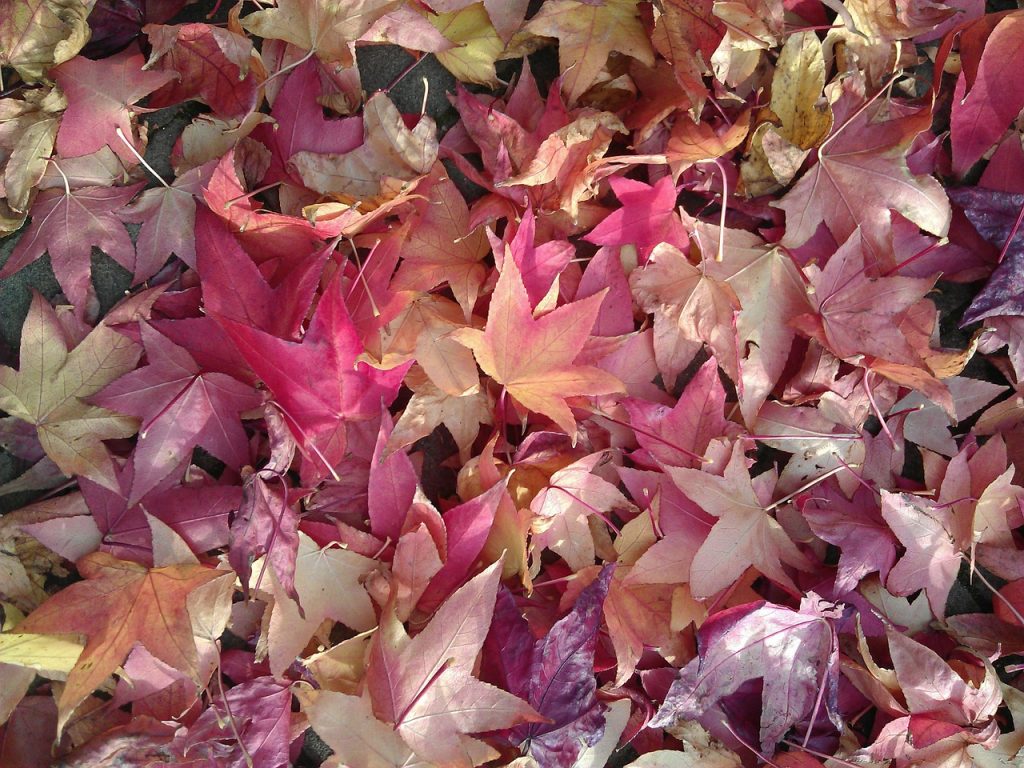
I’ll be the first to admit it: I am a neat freak. I work best on desks with little clutter and feel calm and relaxed in spaces that are well-organized. But outdoors, it’s a different story. Dynamism is in charge and it’s refreshing and exhilarating to be surrounded in nature’s chaos. So this time of year can bother me when I see gardeners putting their neatness imprint on their gardens – especially onto their soils.
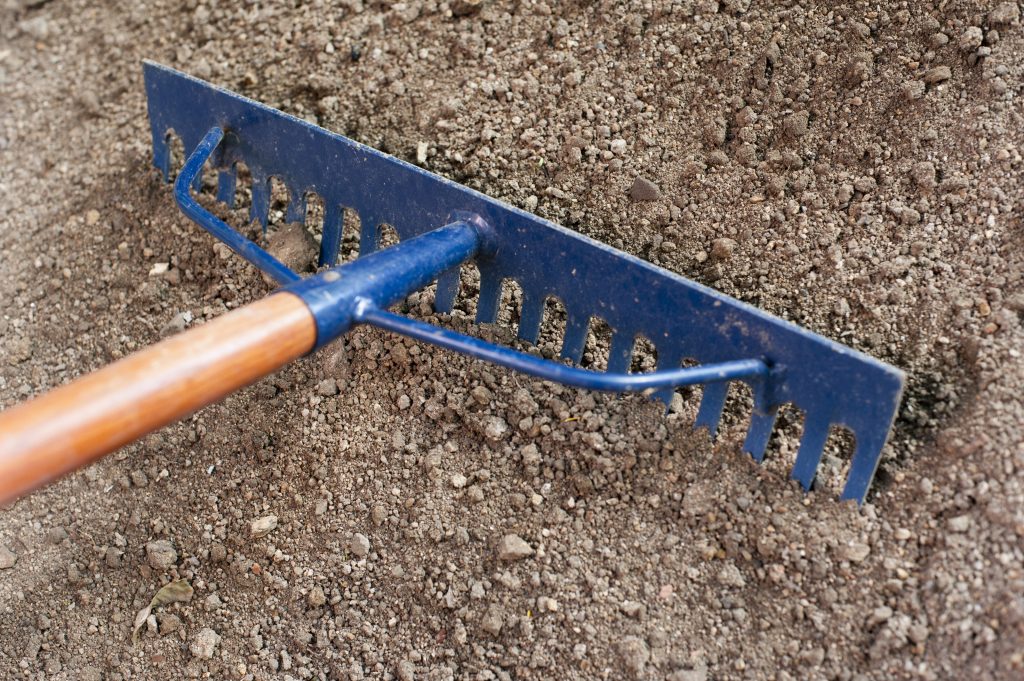
If you Google the word “soil” and look at the images that pop up, nearly all of them look the same. Nice, dark brown, granular stuff, often lovingly cradled in a pair of hands, that really looks more like coffee grounds than soil. In fact, the only realistic picture in the first page of images comes from the Soil Science Society of America. THAT’S actual soil.
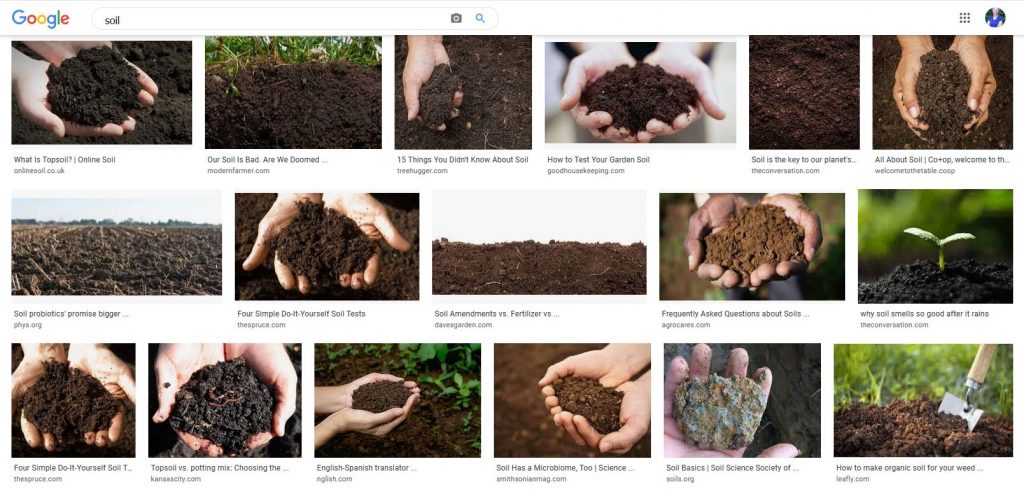
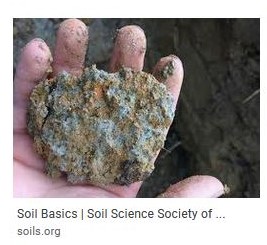
So gardeners must discard the “tidiness ethic” that seeps out of the house and into the soil. Soils are living ecosystems, and living ecosystems are messy. A living soil will have some sort of organic topdressing (mulch) resulting from dead plant and animal material that accumulates naturally. In temperate parts of the world, this happens every autumn, when leaf fall blankets the soil with a protective and nutrient-rich, organic litter. And what do we do? Why, we rake it or blow it and bag it and toss it. Then we turn around and buy some artificial mix of organic material and spread it on top – because it looks nice and tidy.
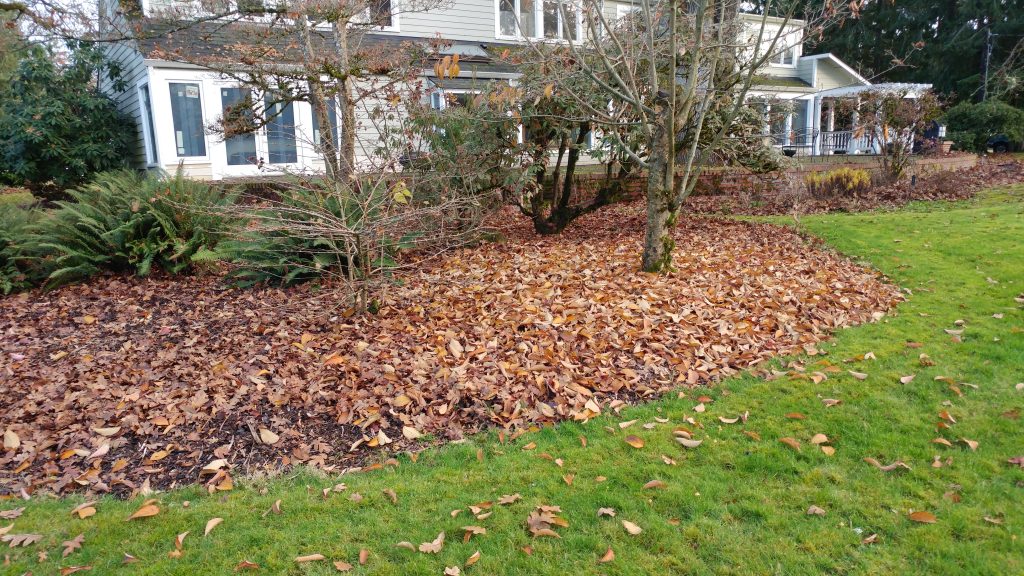
Let’s stop this nonsensical cycle. Stop buying plastic bags for leaf disposal. Stop buying organic matter for mulch. Instead, use what nature provides to protect and replenish your soils. This doesn’t mean you have to leave messy piles of leaves that blow around rather than staying put. Instead, shred them! They look nicer, they stay in place better, and they break down faster. The easiest way to do this is to either run a lawnmower over them, or to put them into a large plastic garbage can and plunge a string trimmer into them. (Bonus – if you use a battery-operated mower or string trimmer you reduce your fossil fuel use.)

Trimmer 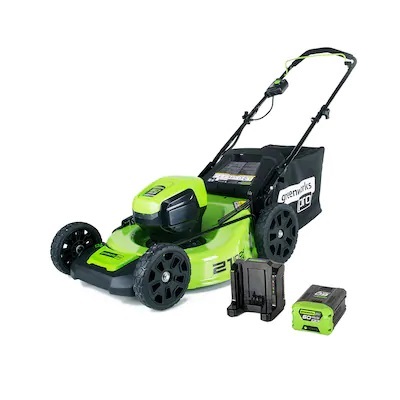
Mower 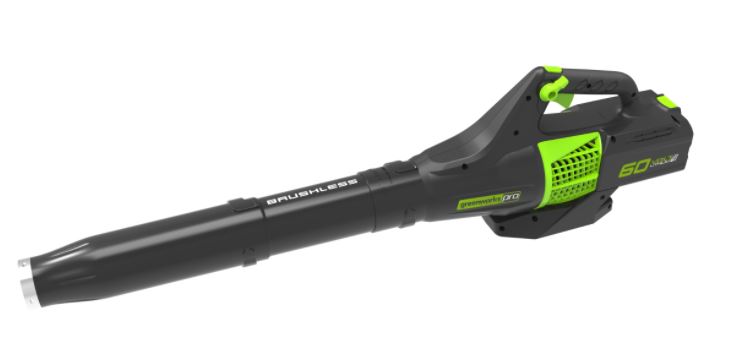
Blower
Likewise, if you have twigs, prunings, and other woody material, save these too. A chipper is a useful, though expensive, purchase. But those woody chips are the best mulch you can use over your landscape and garden beds. Most plants rely on mycorrhizal fungi, and these fungi require a source of decaying wood to function optimally. The chips can go right on top of your leaves to keep them in place and add a slow feed of nutrients.

So this fall, see how much of your garden’s refuse can stay on site. Compost soft materials; shred dead leaves; chip woody material. You’ll reduce your contribution to the landfill, and improve the health of your soils and plants alike.
So very informative – thank you! By the way, we received our first load of arborist wood chips in the Spring and love all the uses for them. For instance, we used them to hill our potatoes and they loved it–200 pounds from 3 beds! Thanks again for your wonderful posts.
So glad to hear you love yuor chips! I may try them on potatoes myself next year and was wondering about using them for hills. I will say that our single rhubarb plant produced abundant stalks all year, far more than one is led to believe for a single plant.
We are about to have some dead branches trimmed from our oak trees. Is it safe to put the wood chips from these branches in our garden, or could they possibly spread the disease or organism that killed the branches to our other plants?
These chips are perfectly fine to use – please see this peer-reviewed fact sheet: https://www.researchgate.net/publication/315662938_Using_arborist_wood_chips_as_a_landscape_mulch_WSU_Extension_Fact_Sheet_FS160E
I also think it’s crazy to gather leaves in plastic bags! That is a tragedy. They belong on the ground. 🙂
I just tilled an area of my yard for a garden in the spring. I live in zone 7. I have a pile of compost to add to the plot but I am unsure what to do with the grass left in the plot, and what if anything I should cover the area with for the winter? Many people have mentioned using sheet mulching, but I see there is conflicting data for this.
Cover the area with a thick area of arborist wood chips. This will not only kill the remaining grass but also protects the soil and assists with breaking down that compost. Personally I would not add the compost unless you’ve had a soil test to show you need more organic material and nutrients. It’s very hard to draw down excess nutrients.
Do not use sheet mulches. They are not natural, and they restrict water and gas movement. If you look at the post called “Cardboard controversy” you will see a more in depth discussion.
This is great information, thank you so much!! I really appreciate it!!
Hello,
I’ve actually been thinking about the “shred fallen leaves” versus “leave them whole” question for a bit. I listen to Margaret Roach’s podcast and lately she had some episodes on the life cycles of insects, particularly caterpillars, that use dead leaves to hibernate in. If you shred all your leaves before spreading them, aren’t you killing your beneficial insects?
Some links:
https://awaytogarden.com/bee-friendly-garden-care-with-heather-holm/
https://awaytogarden.com/fall-cleanup-with-ecology-in-mind-with-doug-tallamy/
I’m not sure what degrees Doug Tallamy and Heather Holm have and I haven’t had a chance to read their books yet myself. Have you checked them out? Is their writing supported by research?
Is there any other research about this you could share? I’m very interested in how to be a more ecological gardener. The part about not clearing away dead perennials below 12″ was a surprise–but I do want to leave nesting sites for my native bees, so I’ll be doing that with my native perennials from now on.
Thank you for your articles and your help!
Hi Amy –
It’s unlikely that you would be able to shred ALL the leaves on your property, and if you shred them in the fall there won’t be any hibernating insects (they appear later). Hibernating insects would also be able to use shredded leaves. The point is that wet mats of large, intact leaves will have a negative impact on soil conditions by impairing oxygen movement into the soil. This has been demonstrated extensively in natural systems. They also blow around more easily when they are dry.
I also am not familiar with not clearing away dead perennials below 12″ – that must be from a podcast. And I doubt seriously that’s an observation based on scientific research.
Hi Amy,
I just read one of Doug Tallamy’s books yesterday (which is why I landed on this blog page). It was a great read, very informative and grounded in science. He has a doctorate in entomology, is a professor at the University of Delaware, and author of a slew of published papers on the interaction between insects and plants. I learned a lot, including that not all native plants offer the same “bang for your buck” in terms of the numbers of animal species they support.
In Nature’s Best Hope, Dr. Tallamy mentions Heather Holm just once, to refer to her finding that most bees that overwinter in plant stalks do so within a foot of the ground. He says IF she’s right, we could cut the stalks to a foot in the fall without doing much damage. Tallamy’s book has a fat reference section, but Holm isn’t listed as an author in any of the papers there. It sounds like the jury is still out on her discovery.
The interview you posted with Holm was very interesting. As a lazy gardener myself, I liked her thought to avoid commercial bee houses (more upkeep for us humans), and simply clip the stems longer in spring to provide a natural habitat. I’ll begin doing this as well. Thanks for the info!
Jayne
Jayne,
It’s excited that you read Tallamy’s book and liked it! I’ve been slow about my garden reading but I’m definitely bumping it up the list. I need to organize my priorities about which native species to plant (and how to manage the garden for wildlife) and it sounds like a great resource.
If you liked the interview with Holm you might want to also check out the podcast “Growing Greener.” I’ve only listened to one episode so far (from October 21) but it taught me that chickadees need 70% of total plant biomass in a backyard to be natives for populations to expand. I need lots of native shrubs to balance out all my roses now!
Since this is a science based blog I need to point out that any perception that native plants are superior to introduced, noninvasive plants in terms of providing ecological services is not supported by the bulk of published, peer-reviewed research. You can read more about the research here: https://www.researchgate.net/publication/281751812_Nonnative_noninvasive_woody_species_can_enhance_urban_landscape_biodiversity
It’s not behind a pay-wall! Awesome, thank you. I’ll check it out.
What do you think of this tool? It rates native plants by the caterpillar species they support. Have you seen it before? It seems to be linked to the University of Delaware.
https://www.nwf.org/nativeplantfinder/about
I don’t put a lot of credence behind these types of tools – they are static and do not take into account the ability of insects (and other species) to adapt to new food sources. The very first sentence in the description is biased and verifiably false, given the numerous publications that have shown the adaptability of many insect species to introduced, noninvasive plants. It also neglects that fact than many native plants are not adapted to home garden and landscape conditions – which are not “natural.” Well-chosen native plants are fine, but so are well-chosen introduced plants. And diversity in plant species, function, and structure are the most important characteristics for supporting wildlife.
Like your comments about never wasting leaves in the Autumn. However, don’t forget to leave some untidiness in the garden, as insects and small mammals overwinter in detritus. And use no-dig gardening, to save soil structure! M
I have a question about using cedar wood chips and debris as mulch. I thought I’d read somewhere on the GardenProfessors’s blog that it suppresses the germination of seeds, acting two-fold in weed suppression: physically, I.e. preventing weed seeds below the mulch from getting the light they need to germinate but also chemically, by interfering with the germination of seeds that land onto the mulch. Is this so? And because of this, one would mulch landscaped gardens but not around newly transplanted seedlings – and not in food gardens?
I reread your papers on The Myth of Aleopathy of Wood Chips and The Myth of Pathogenic Wood Chips and didn’t see an expansion to this question.
Thank you for sharing so generously your expertise over the years!
With the greatest respect,
Sonia
Hi Sonia –
As I mentioned in answer to your other question, we need to clarify exactly what you are using – bark chips or wood chips They have significant chemical and physical differences.
To clarify: Thuja plicata wood chips fresh from an arborist who has cut down a tree, needles, bark, wood, all parts – not bagged.
For food gardens, is it ok?
If not, pls explain or refer?
Greatly appreciated, thanks.
Pefect! Use them anywhere! Just be sure you don’t have them covering your germinating seeds. Once seedlings are big enough you can skootch them underneath.
Take a look at this blog post for more, especially the photos.
Excellent! Forever thankful!
Kind regards,
Sonia
I’m specifically referring to cedar chips/debris as mulch for food gardens. I understand other mulches such as straw (not hay!) are indispensable to food gardens. But can cedar chips be used for food gardens? If not, why not? And among many other reasons, do cedar chips benefit perennial and woody ornamental gardens by chemically interfering with the germination of seeds landing on the mulch?
There’s no reason to assume straw is indispensible. It’s a mulch. Arborist chips are structurally and chemically better than straw.
When you say “cedar chips” do you mean the bagged stuff? That’s bark. It’s nearly worthless as a mulch. Arborist wood chips are what we recommend. Please specify exactly what you are using.
Hey, Linda! I really enjoyed listening to you on the GROWING GREENER podcast.
This past spring I invested in a leaf mulcher and took all the extra leaves in my beds and mulched then and then returned them to the beds! It was great not dumping them!
This fall, I plan to do the same. Mulch all the leaves and return them to my beds. I’ll take whatever woody stuff I can find to add to this pile!
Two questions.
1. Where do you rate leaf mulch as a mulch? Not better than “arborist chips” but a lot better than the common dyed mulches?
2. If I return the shredded leaves to my beds this fall, would you add anything else to the garden beds in spring or will the fall mulching be enough? I’m sure there will still be new leaves in the yard to mulch in the spring – but would you add anything else?
I grow mostly native plants and live right outside Boston!
1. Leaf mulch is a good mulch. It does tend to break down more quickly than wood chips but that can be a good thing depending on the situation. Dyed mulches-the problem isn’t really with the day, as tacky as it may be. The issue is with the material the mulch is made from. It’s often shredded contractor waste, old 2×4, etc or pallets.
3.Re: adding more mulch in the spring-that depends on how quickly the previous mulch has broken down. It’s your call.